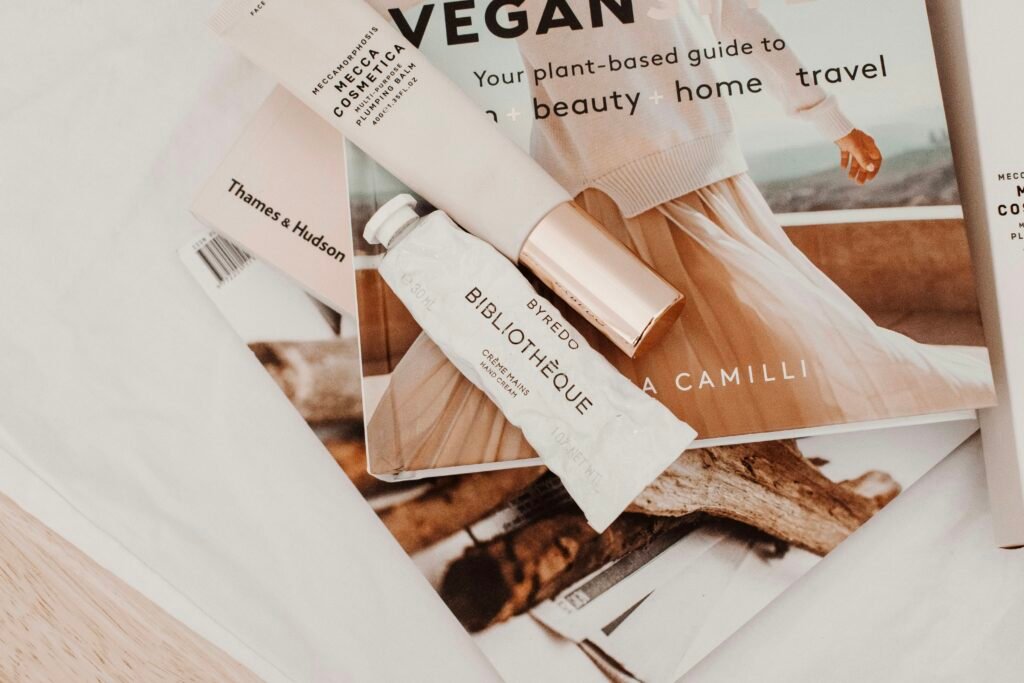How Do You Find The Right Foundation Shade And Formula For Your Skin Tone And Type?
Finding the perfect foundation shade and formula to match your unique skin tone and type can sometimes feel like searching for a needle in a haystack. But fear not, as we’re here to guide you through this perplexing journey of beauty discovery. Whether you have fair, medium, or deep skin tones, and whether your skin is oily, dry, or combination, we’ve got you covered. In this article, we’ll walk you through some foolproof tips and tricks to help you navigate the world of foundation, making sure you find the holy grail product that effortlessly enhances your natural beauty. Get ready to unlock the secrets to a flawless complexion that’s tailor-made just for you.

This image is property of images.unsplash.com.
Understanding Your Skin Tone
Your skin tone plays a crucial role in determining the right foundation shade for you. To start, it’s important to identify your undertone, which can be warm, cool, or neutral.
Identifying your undertone
Determining your undertone can be done by examining the veins in your wrist. If your veins appear more green, you likely have warm undertones, while blue or purple veins indicate cool undertones. If your veins appear to be a mix of both green and blue, you may have a neutral undertone. Another way to identify your undertone is by observing how your skin reacts to certain jewelry. If gold jewelry complements your skin better, you likely have warm undertones. Conversely, if silver jewelry looks more flattering on you, cool undertones may be present.
Determining your skin tone
After identifying your undertone, the next step is to determine your skin tone. Skin tones generally fall into four main categories: fair, light, medium, and deep. Fair skin tones are usually very light and burn easily, while light skin tones tend to burn easily but can also tan. Medium skin tones rarely burn and tan gradually, whereas deep skin tones rarely burn and tan easily.
Determining Your Skin Type
Understanding your skin type is essential for choosing the right foundation formula. There are five primary skin types: normal, dry, oily, combination, and sensitive.
Normal skin
If you have normal skin, you’re fortunate to have a well-balanced complexion. Your skin is neither too oily nor too dry, and you rarely experience breakouts.
Dry skin
Dry skin tends to feel tight, especially after cleansing. It may be prone to flakiness and can sometimes be dull in appearance. Moisturization is key for this skin type.
Oily skin
Oily skin is often characterized by excessive shine, especially in the T-zone (forehead, nose, and chin). This skin type is prone to blemishes and acne due to overactive oil production.
Combination skin
Combination skin is a mix of dry and oily areas. The T-zone tends to be oily, while the cheeks and other areas might be dry. Balancing hydration is essential for this skin type.
Sensitive skin
Sensitive skin is easily irritated and often experiences redness, itching, or burning sensations. This skin type requires gentle and hypoallergenic products.
Choosing the Right Foundation Shade
To find the perfect foundation shade for your skin, it’s essential to comprehend foundation undertones, test various shades, and consider different lighting conditions.
Understanding foundation undertones
Foundation shades can have warm, cool, or neutral undertones, just like your skin. Warm undertones have hints of yellow or golden hues, while cool undertones have pink or blue undertones. Neutral undertones are a combination of both warm and cool tones.
Testing foundation shades
Testing foundation shades is crucial to ensure a perfect match. Apply different shades to your jawline to see which shade seamlessly blends with your skin. The shade that disappears onto your skin is likely the right one for you. It’s also important to remember that the shade might vary slightly depending on the lighting conditions.
Considering daylight and indoor lighting
Foundation shades can look different under various lighting conditions. To ensure your foundation always appears natural, test it in both natural daylight and indoor lighting. This way, you can evaluate how it looks in different settings.
Matching Foundation to Your Skin Tone
When matching foundation to your skin tone, it’s essential to consider not only the shade intensity but also the undertones. Additionally, utilizing foundation swatches and seeking professional advice can greatly assist in finding the perfect match.
Identifying your shade intensity
Your shade intensity refers to how light or dark your skin is. It’s important to choose a foundation shade that closely matches your skin’s natural depth of color. Going too light or too dark can result in an unnatural appearance.
Matching undertones
Once you’ve determined your undertone, look for a foundation shade with a corresponding undertone. Warm undertones pair well with shades that have yellow or golden undertones, while cool undertones work best with foundation shades that have pink or blue undertones. For neutral undertones, opt for shades with a balanced mixture of warm and cool tones.
Using foundation swatches
Foundation swatches are small samples of foundation shades that can be applied to your skin to compare against your natural skin tone. Applying swatches to your jawline or wrist can help you identify which shade is the closest match. Remember to evaluate the swatches under both natural daylight and indoor lighting.
Consulting with beauty professionals
If you’re unsure about finding the perfect foundation match, don’t hesitate to seek advice from beauty professionals. They can provide expert assistance in selecting the right shade and formula for your skin.

This image is property of images.unsplash.com.
Considering Your Skin Type
When choosing a foundation, it’s important to select a formula that caters to your specific skin type. Different formulas offer various benefits and finishes to meet your skin’s needs.
Selecting formula based on skin type
For dry skin, opt for a foundation with sheer or light coverage that provides hydration and doesn’t accentuate dry patches. Oily skin benefits from matte or oil-free formulas that control shine and minimize the appearance of pores. Normal skin can benefit from hydrating or dewy finish foundations that give a natural glow. Combination skin benefits from long-lasting or transfer-resistant formulas, especially in the T-zone. Sensitive skin requires non-irritating and hypoallergenic formulas that are gentle on the skin.
Testing Foundation Formulas
Before committing to a foundation, it’s wise to test different formulas to ensure they work harmoniously with your skin and offer the desired coverage and finish.
Requesting samples
Many beauty stores and counters offer samples of foundation formulas. By requesting samples, you can try the formulas at home and see how they perform on your skin throughout the day.
Applying foundation on a clean face
Before testing a foundation formula, make sure your face is clean and moisturized. Applying foundation on a clean canvas allows you to evaluate how well it adheres to the skin and blends seamlessly.
Observing the color after settling
Allow the foundation to settle on your skin for a few minutes before evaluating the color. Foundation shades may change slightly after drying, so it’s important to observe the final appearance.
Checking for irritations or allergies
During the testing phase, pay attention to any signs of irritation or allergies. If you experience redness, itching, or any discomfort, the formula may not be suitable for your skin.

This image is property of images.unsplash.com.
Using Online Tools for Foundation Matching
In this digital age, online tools can assist in finding the perfect foundation match without leaving the comfort of your home.
Virtual shade matching tools
Some websites and beauty apps offer virtual shade matching tools that use algorithms to analyze your skin tone and recommend suitable foundation shades. These tools can be a helpful starting point for narrowing down your options.
Foundation shade databases
Websites and databases dedicated to foundation shades provide comprehensive information about various brands and shades. These resources often include swatches, undertone descriptions, and reviews to help you make informed choices.
Apps for skin tone analysis
Certain apps utilize advanced technology to analyze your skin tone and match it with the appropriate foundation shade. With just a photo of your face, these apps can recommend shades that are likely to suit your skin.
Seeking Professional Advice
If you prefer a personalized and hands-on approach, seeking professional advice can ensure you find the ideal foundation shade and formula for your unique needs.
Visiting beauty counters or makeup stores
Beauty counters and makeup stores have knowledgeable staff who can guide you through the process of finding the perfect foundation match. They can offer personalized recommendations based on your skin type, undertones, and preferences.
Consulting with makeup artists
Makeup artists are experts in finding the right foundation shade and formula and can provide valuable insights. Whether you visit a makeup artist for a consultation or hire one for a special occasion, their expertise can help you achieve the flawless finish you desire.
Getting professional makeup services
If you’re attending a special event or want a professional touch, consider getting your makeup done by a professional. They have an extensive range of foundation shades and the skills to match you with the perfect color and finish.
Considering Seasonal Changes
As the seasons change, so do our skin tones. Adapting your foundation shade to match seasonal variations is essential for a natural look throughout the year.
Adapting foundation shade to seasonal variations
In the summer, when your skin is likely to be tanned, you may need to switch to a slightly darker foundation shade. Conversely, in the winter, when your skin may be fairer, opting for a lighter shade can provide a more flattering match.
Sun protection and summer foundation
During the summer, it’s crucial to prioritize sun protection. Look for foundations with added SPF to ensure your skin remains shielded from harmful UV rays. Additionally, opt for a lightweight formula that won’t feel heavy or melt in the heat.
Winter foundation for dryness
Winter often brings dryness, so it’s important to choose a foundation formula that provides hydration and helps combat flakiness. Look for foundations with moisturizing properties or choose a liquid formula that won’t accentuate dry patches.
Adjusting Foundation Routine Over Time
As we age, our skin undergoes changes, and our foundation routine should adapt accordingly. Adjusting your foundation routine can also accommodate any changes in your skin tone.
Changes due to aging
Aging can result in fine lines, wrinkles, and changes in skin texture. Choosing a foundation formula with anti-aging benefits, such as those with hyaluronic acid or peptides, can help address these concerns and provide a more youthful appearance.
Skin tone changes and foundation matching
Hormonal changes or other factors can cause shifts in skin tone over time. Regularly reassessing your foundation shade and undertone can ensure you always have a perfect match and avoid any noticeable contrast between your face and neck.
Updating your foundation arsenal
As your skin’s needs change, so should your selection of foundation formulas. Periodically evaluate your foundation collection and update it accordingly. This way, you can ensure you have a range of options to cater to different occasions and weather conditions.
Understanding your skin tone and type is the first step in finding the right foundation shade and formula. By identifying your undertone, determining your skin type, and considering various factors such as lighting conditions and seasonal changes, you can confidently choose a foundation that enhances your natural beauty. Whether you opt for testing in person or utilizing online tools, the key is to find a shade that matches your undertones and a formula that caters to your skin’s unique needs. Remember, seeking professional advice is always beneficial, and regularly reassessing your foundation routine ensures you adapt to any changes in your skin. With the right foundation, you can achieve a flawless complexion that radiates confidence.


